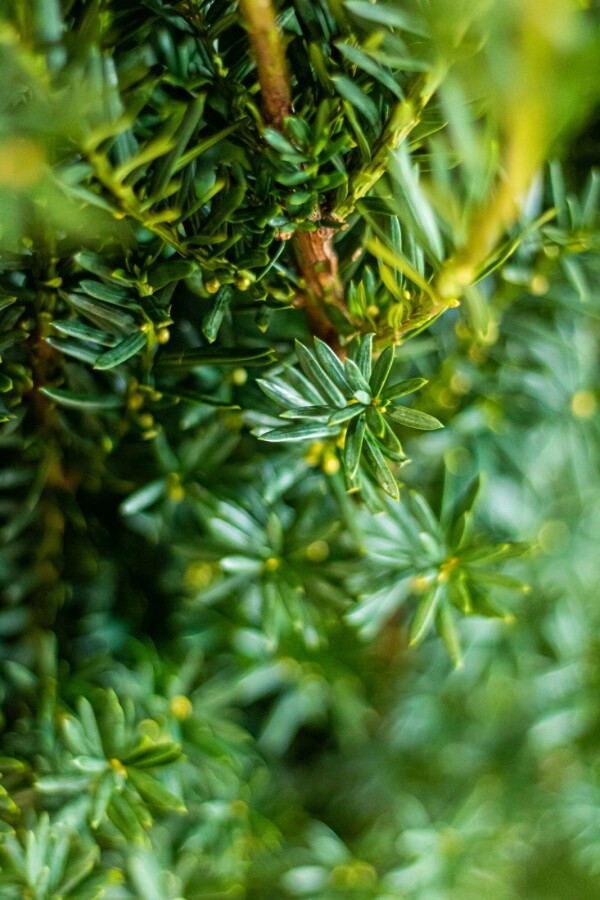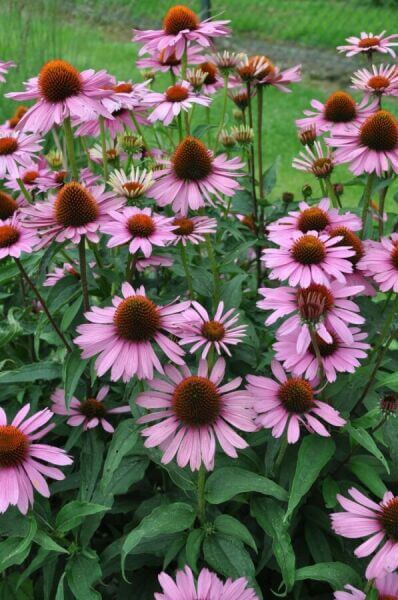Best Hedging Plants For Autumn Hedges
Best Hedging Plants For Autumn Hedges
Blog Article
Best Hedging Plants For Raised Beds
Improve your garden's attraction with lavish hedge varieties such as Yew (Taxus), Thuja, Laurel, Photinia, and Bamboo, celebrated for their structural stability and environmental advantages.
Yew and Thuja provide evergreen coverage and winter season resilience, while Laurel provides quick growth and broad, aromatic leaves.
Photinia adds seasonal beauty with its vibrant red foliage, and Bamboo lends a low-maintenance, tranquil ambiance.
These hedges improve air quality, lower noise, and produce tranquil, personal areas.
Proper planting, spacing, and upkeep make sure vigorous growth and environmental consistency.
Explore how these lush varieties can raise your garden's appeal and well-being.
Key Takeaways
Change Your Garden With Lush Hedge Ranges
- Select Yew for its thick, evergreen growth and unrivaled longevity.
- Opt for Laurel for its fast development and broad leaves, ensuring quick privacy.
- Select Photinia for its lively seasonal foliage, which turns a striking dark red.
- Make use of Bamboo for a low-maintenance, winter-hardy hedge with visual appeal.
- Space plants 2-3 per meter and prune regularly for ideal growth and health.
Popular Hedge Plants
When transforming a garden with rich hedge varieties, it's necessary to think about popular hedge plants such as Yew, Thuja, Laurel, and Photinia due to their distinct qualities and advantages.
Yew (Taxus) is extremely respected for its durability and thick, green development, making it a prime option for withstanding landscapes.
Thuja is kept in mind for its evergreen foliage and robust winter durability.
Photinia adds seasonal vibrancy with red leaves that darken in time, creating dynamic visual appeal.
Laurel offers rapid development and aromatic, broad leaves, perfect for fast privacy.
Additionally, Bamboo is an excellent choice for atmosphere, using a low-maintenance, winter-hardy choice that improves the garden's aesthetic with its elegant, swaying walking canes.
These choices accommodate a variety of horticultural requirements and choices.
Benefits of Garden Hedges
Garden hedges offer a plethora of advantages, making them an important addition to any landscape. These natural barriers are affordable to implement and supply considerable wind defense, improving air circulation and adding to sound reduction. The thick foliage of hedges like Thuja and Beech guarantees privacy by blocking exposure, creating a tranquil and secluded environment.
Hedges likewise play an important role in microclimate guideline, providing a steady environment that promotes plant development and reduces temperature level changes. Their intricate leaf structures filter contaminants, improving air quality and adding to a healthier garden community.
Additionally, hedges excel in sound reduction, taking in and deflecting sound waves to lower ambient noise levels. This double functionality of offering both visual and acoustic privacy boosts the overall harmony and aesthetic appeal of any garden.
Planting and Maintenance Tips
For a successful hedge, careful preparation of the planting area is essential. Make sure the soil has appropriate pH and drain to support strong root development.
Space the plants appropriately for the picked species. Water the hedge regularly during its initial growth phase, adjusting as needed with seasonal changes.
Execute a systematic bug control and disease prevention strategy, using organic or chemical treatments when required. Routinely inspect for aphids, mites, and fungal infections.
Apply mulch to retain moisture and reduce weeds. Seasonal pruning promotes thick development and air blood circulation, important for plant health.
Following these guidelines will assist you cultivate a vibrant, properly maintained hedge that improves the charm of your garden.
Spacing and Trimming Guidelines
Spacing and Trimming Standards
Correct spacing and trimming are essential for cultivating healthy, visually appealing hedges. Appropriate spacing makes sure each plant receives sufficient nutrients, light, and air flow.
Follow these standards for ideal hedge maintenance:
- Spacing: Position hedge plants 2-3 plants per meter to encourage robust development.
- Pruning Techniques: Regular pruning is essential for keeping preferred hedge height and shape. Trim brand-new development in summer season and cut back older wood during winter.
- Seasonal Care: Change trimming approaches and schedules according to seasonal requirements to guarantee plant health.
- Hedge Height: Regularly screen and trim to preserve the desired hedge height and accomplish uniform looks.
Complying with these steps will guarantee your hedge thrives, improving both the appeal and functionality of your garden.
Selecting the Right Hedge
Picking the Right Hedge
Choosing the proper hedge involves assessing aspects such as mature height, foliage density, and ecological resilience. Successful hedge plant choice needs understanding each types' development characteristics and site-specific versatility.
For instance, Yew (Taxus) uses excellent longevity and thick development, while Thuja is significant for its winter resilience. Furthermore, considering upkeep requirements is important; fast-growing types like Laurel or Privet need regular cutting, whereas low-maintenance alternatives like Bamboo or Ivy may be more suitable for those seeking very little maintenance.
Ecological elements such as soil type, light accessibility, and moisture conditions should likewise assist the selection procedure. This cautious method makes sure the chosen hedges will prosper, offering both practical and visual benefits to the garden landscape.
Delivery and Planting Guidance
To ensure your hedge plants grow, they must be provided by specialized couriers and planted immediately upon arrival.
Follow these essential actions for successful planting:
- Soil Preparation: Enhance the soil with organic matter to enhance drainage and nutrient material.
- Planting Depth: Create a trench two times the width and equivalent to the depth of the root ball.
- Watering Strategies: Water completely after planting, keeping the soil regularly moist but not saturated.
- Mulching: Apply a layer of mulch to retain wetness and reduce weeds.
Client Support and Service
Offered the important role of timely help in horticultural pursuits, our client assistance group is available six days a week through telephone, email, and social networks to provide skilled recommendations and promptly resolve any issues. Their commitment to fast response times makes sure consumer fulfillment by solving queries associated with plant health, ideal planting techniques, and maintenance schedules.

Schedule
Email
Within 24 hours
This comprehensive support group, strengthened by an outstanding 9.3/ 10 customer ranking, highlights our commitment to enhancing the gardening experience for every single client.
Frequently Asked Concerns
How Long Does It Consider Hedge Plants to Establish?
Hedge plants typically need one to 3 years to become totally established, with the specific duration differing by species and growing conditions.
Efficient care during this vital duration is vital for robust growth. Constant watering, vigilant weed control, and suitable fertilizer application are pivotal in promoting strong root development.
For instance, fast-growing species like Laurel may develop more quickly, while slower-growing varieties such as Yew may take longer. Diligent maintenance speeds up the facility process, resulting in thick and healthy hedges.
What Are the Best Hedge Plants for Personal Privacy?
The concern of the best hedge plants for privacy includes examining evergreen and deciduous options.
Evergreen hedges like Thuja, Laurel, and Cypress offer year-round protection, making sure continuous privacy.
In contrast, deciduous hedges such as Beech provide seasonal personal privacy, shedding leaves in cooler months.
Secret maintenance ideas for personal privacy hedges consist of routine trimming, fertilizing in spring, and proper spacing-- usually 2 to 3 plants per meter.
Additionally, consistent watering and persistent weed elimination are vital for promoting healthy, thick development.
Can Hedge Plants Attract Wildlife to My Garden?
Yes, hedge plants can attract wildlife to your garden by offering vital advantages like shelter, food, and nesting websites, therefore boosting regional biodiversity. For example, yew, holly, and laurel are exceptional for bring in birds, while ivy supports a range of bugs.
Nevertheless, it is very important to keep in mind that there are some disadvantages, such as increased maintenance to manage bugs and routine upkeep. Carefully picking and keeping hedge varieties can assist stabilize these downsides and advantages, ultimately fostering a lively and sustainable ecosystem in your garden.
Exist Any Flowering Hedge Plants Available?
Yes, there are flowering hedge plants available that can boost the beauty of your garden.
For instance, Elaeagnus, also referred to as Olive Willow, produces aromatic white flowers in the fall, adding a touch of elegance.
Photinia, another popular option, showcases vibrant red leaves that grow into a rich green, developing a dynamic visual result throughout the seasons.
To guarantee these plants flourish, it's necessary to practice appropriate pruning methods and seasonal maintenance, such as cutting new growth in the summertime and cutting back in the winter season.
These measures will assist keep the health and visual appeal of your blooming hedges.
How Do I Avoid Pests in My Hedge Plants?
To prevent bugs in hedge plants, employ natural insect control techniques and keep appropriate hedge care. Introduce helpful bugs like ladybugs, which prey on hazardous insects, to create a balanced environment.
Regularly inspect your hedges for signs of problem and promptly eliminate any afflicted parts to avoid the spread. Make sure the health of your hedges by using balanced fertilizers and supplying adequate water.
Make use of mulching to keep soil wetness and appropriate spacing to decrease plant tension and promote robust development. These practices jointly assist in decreasing pest issues and maintaining a healthy hedge.
Conclusion
In essence, choosing the right hedge varieties such as Yew, get more info Thuja, and Laurel can transform any garden into a serene haven. These plants provide year-round greenery, boost visual appeal, and deal useful benefits like noise reduction and wind protection.
Correct planting strategies, precise spacing, consistent watering, and seasonal trimming are vital for optimal development.
Reliable delivery services and expert consumer assistance guarantee a seamless experience from purchase to planting, making it easier than ever to raise your outdoor area.
Garden hedges provide a wide range of benefits, making them an important addition to any landscape. These natural barriers are economical to execute and provide substantial wind security, enhancing air blood circulation and contributing to noise decrease. The dense foliage of hedges like Thuja and Beech makes sure privacy by blocking exposure, creating a remote and peaceful environment.

Pruning Strategies: Routine pruning is vital for preserving preferred hedge height and shape. Trim new growth in summer and cut back older wood throughout winter season.
Report this page